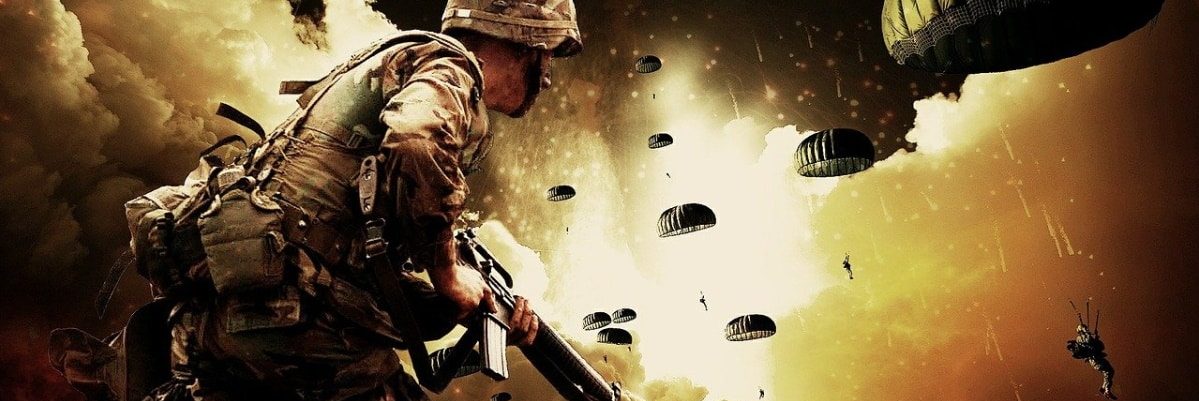This article is an amended version of the speech given at the Machiavelli 2022 Defense Conference.
Prominent among the major political and financial decisions brought about by the conflict in Ukraine is the increase in military spending that involves, in fact or in intention, all European countries. Such as the now widespread (including in Italy) adherence to the goal of raising military spending to 2 percent of GDP, or even 3 percent in the case of Poland, which has launched a massive rearmament. Also emblematic is the case of Germany, which has allocated a special 100 billion euro fund for its armed forces.
Hints from the Ukrainian conflict
It is difficult to predict when and with what outcome the war that kicked off in 2014 in the eastern Donbass region and has escalated rapidly since Feb. 24, with Russian military intervention and the indirect involvement of NATO member states as providers of massive military aid and training programs to Kiev's troops, may come to an end. After 5 months of fighting, it is possible to draw some indicators that this conflict provides the West and the European nations.
Although the Russians consider it a "special operation," the current campaign can be considered the first conventional war fought on a large scale in Europe since the last Allied offensives against Nazi Germany in early 1945.
Russian forces' initial penetration along the entire eastern and northern Ukrainian border formed a front of about 1,500 kilometers, which was later reduced to about half after the Russian withdrawal from the Kiev, Cernihiv and Sumy areas and the concentration of forces in the Donbass (Southeast), Kherson/Mikolayv and Melitopol/Zaporizhzhia (South) sectors.
On-field forces see up to 180,000 Russian military personnel deployed alongside some 50,000 fighters from the Donetsk and Luhansk People's Republics, countered by at least 250,000 Ukrainians including regular forces, National Guard and popular militias enlisted to defend urban centers. This is a number of forces in the field unprecedented in Europe since the end of World War II, not least because of the number of assets involved in the operations, which include thousands of armored vehicles including tanks, combat tracked vehicles and wheeled armored vehicles, hundreds of field artillery pieces including howitzers and multiple rocket launchers in addition to mortars and ballistic, cruise, antitank and antiaircraft missiles, and hundreds of aircraft, helicopters and drones.
Not even comparable to the protracted Balkan wars that bloodied the former Yugoslavia in the 1990s, which were mostly low-intensity conflicts with a few sporadic more intense battles, if one excludes the 78-day air campaign unleashed by NATO against Serbia in 1999. Nothing especially to compare with the wars involving Western nations in Iraq and Afghanistan over the past 20 years, where the fighting has been mostly asymmetrical and almost all of the fighting in Iraq and Afghanistan has been fought at the company (often platoon) level against a few dozen or at most a few hundred insurgents. In Ukraine, on the other hand, entire brigades are maneuvering and fighting with wide-ranging actions at the division if not army corps level, as in the case of the Russian offensive in Donbass.
At the same time, this war should also be considered a civil conflict since part of the Ukrainian population and fighters are on Moscow's side. A reason that explains why the Russians in the first phase of the conflict focused on a wide-ranging military action. An operation that was aimed at minimizing losses by trading the withdrawal of Moscow's forces from around Kiev for the withdrawal of Ukrainian troops from the Donbass, inhabited by a population that in the Russian view must be liberated. The failure of Russian-Ukrainian talks mediated by Turkey has left Moscow with the only military option to take full control of the Donbass and the areas between Crimea and the Dnepr River.
A relevant and sensitive aspect, that of civil war, which cannot be ignored if one wants to look for possible paths forward and, above all, understand the nature of the conflict, including the violence on prisoners and civilians and the reprisals typical of any such war. It is no coincidence that the use of the term "civil war," as well as other terminology that does not strictly adhere to Kiev's propaganda diktat of Russian aggression, is severely punished by Ukrainian laws of war. Such regulations led to the dissolution of as many as 12 parties, including the second largest by votes in the last elections, to counter a "defeatist" narrative. At the same time, the word "war" is banned in Moscow because it is a "special operation" aimed at liberating the Russian populations of Ukraine.
Understandable, perhaps, that Ukraine and Russia face the war with a strict censorship to ideas and opinions. Equally legitimate would be to expect that in Europe we would not fall in line with "militancy," maintaining a political and military capacity for analysis and understanding of events necessary to provide some chance of stopping a conflict whose prolongation is already (and tomorrow will be even more so) devastating to Europe's security, including its economic security.
More troops
In light of the war developments, the first element to be taken into consideration in Europe is the numerical size of the armed forces, and in particular the armies, that exist in the Old Continent today and that have been numerically increasingly reduced. Perhaps under the illusion that military challenges would be represented by asymmetrical wars against guerrillas and insurgents, to be countered with small, highly mobile units.
The four largest armies on the Old Continent (British, Italian, French, and German) now have land forces below 80,000 effective troops, moreover, not all of them obviously deployable on the front lines. In contrast, the other European NATO states have even smaller armies, often of almost "symbolic" size.
If we imagine a conventional conflict where we have to rotate battalions every two weeks on the front lines and brigades every month to ensure they have a rest period in the rear, it is easy to see that the largest European armies would not be able to deploy more than 10 to 15,000 military personnel in battle at the same time: one division on two or three brigades. The Italian Army deploys 93,000 military personnel while permanent service volunteers have an average age of 39.8 and 57 percent are over 40.
Recently, General Mark Carleton-Smith, chief of staff of the British Army, admitted in an interview with "Soldier Magazine" in May that the war in Ukraine "highlighted the fact that mass and size are important," confessing that he disagreed with the government's decision to further reduce the British Army from 82,000 to just 73,000 troops. On June 18, 2022, Carleton-Smith's successor, General Patrick Sanders, said that the United Kingdom must be prepared to fight in Europe once again, after the two world wars and the Cold War deployment of the British Army of the Rhine to Germany: "We are the generation that must prepare the Army to fight in Europe once again."
Beyond the claims, armies with such limited manpower and without ample callable reserves and facilities and armaments capable of housing and equipping them may be suitable for conducting low-intensity, asymmetrical campaigns. However, they appear wholly inadequate to the needs emerging from the conflict in Ukraine. This also calls for serious reflection on the need for a substantial Reserve, to be kept trained with frequent recalls and to be mobilized to replenish the ranks of the units, replenish losses or create new units as needed.
The technological complexity of military tools, weapons and equipment makes it difficult to believe that one can succeed in a few weeks in transforming a civilian into a fighter, moreover specialized as a tanker or gunner, as the Ukrainians are doing. The Italian Army's experience with volunteers in short term (one year) teaches that in 12 months a soldier can be trained, but only for limited tasks and not for "war."
This means that, in the event of open conflict, it will be necessary to have armies that are more numerous than at present and with a trained reserve that can be recalled and integrated into existing departments or new units for military operations after a few weeks of blending and preparation.
More means
The number of assets in the Armed Forces of European nations also appears wholly inadequate for a conventional conflict. Even taking with caution the figures provided by the belligerents on the losses inflicted on the enemy, it is certain that, beyond the propaganda, losses were high on both sides of the front. This imposes serious reflections on Europe.
Tank fleets deployed by each of the four major European armies mentioned earlier range between 200 and 330 tanks (though not all of them operational) compared with 1,300 British and 5,000 German tanks in service during the Cold War. Slightly higher numbers are found for combat vehicles or field artillery.
Looking back at the 1989-90 "Military Balance," we find that Italy deployed 1,750 tanks including Leopard 1, M-60 and M-47 with 800 105-mm and 155-mm artillery pieces. Germany could count on nearly 5,000 Leopard 1, Leopard 2 and M-48A5 tanks with 1,300 105-, 155- and 203-mm artillery pieces. France had 1,500 AMX-30 and AMX-13 tanks and 850 howitzers of 105 and 155 mm. In contrast, the United Kingdom could field 1320 Challenger and Chieftain tanks and 550 artillery pieces between 105 and 203 mm caliber.
On the one hand, it would be impossible today to restructure the European armed forces on the models of the Cold War period, when military conscription existed almost everywhere and the Armed Forces were organized to handle large mobilizations. On the other hand, however, it is clear that, with the current forces, the operational capability of the major European armies would be limited to a few weeks in a conflict similar to the one fought in the Donbass. With the rates of losses and attrition encountered, European armored and mechanized units would probably cease to exist within two weeks. The Italian Army's 150 Ariete tanks and some 200 Dardo combat vehicles would have little hope of survival in the kind of battles being fought in the Donbass.
In terms of numbers, the other major European countries' armies would also be so limited that they would be unable to sustain losses and attrition for a long time, even taking into account that Western armored vehicles are heavier and better protected than their counterparts employed by the Russians.
The same assessments can be extended to artillery, which is now present in European armies in too limited numbers of towed howitzers, self-propelled artillery, and multiple field rocket launchers to sustain a conventional conflict for even a few months. It should also be recognized that available ammunition could be exhausted in a matter of days, given the consumption noted in the Ukrainian conflict and the stocks available from European armed forces.
To confirm this, it is sufficient to note the debate that has raged in several European states where military commands have resisted the political will to cede arms and ammunition to the Ukrainians by drawing them from operational units.
More ammunition
In mid-May, the French Parliament's Defense Committee report made it clear that the stockpiles of arms and ammunition are totally inadequate to cope with a conflict such as the one taking place in Ukraine.
Senator Christian Cambon, chairman of the committee, estimated that the number of ammunition used by the Russian army in a single day of war in Ukraine is equivalent to the ammunition used in a year by the Armée de Terre. The present stockpiles would enable the French army to sustain a conflict like the one in Ukraine for three or four days. Replenishing the arsenals of ammunition, rockets and missiles would require no less than three to four years and an expenditure of 6 to 7 billion euros.
Better to remember that the French armed forces are perhaps the best equipped and supplied in Europe. So it is safe to assume that for other European "powers" the situation is even more serious, as parliamentary reports concerning the German armed forces, for example, have shown in recent years. The German Defense Minister, Christine Lambrecht (SPD), has estimated that increasing ammunition stocks to make them adequate for a conventional warfare context will cost about 20 billion euros.
Reports from the front lines also in this regard beg the question of how many European armies have adequate ammunition reserves to cope with such a standoff. However, it is also necessary to reflect on the need to train European troops to withstand the stress of hellish, prolonged and precise fire on their positions. A type of training, moreover, that would require large polygons and training areas, now rare to find in Europe.
More aircraft
On the aviation side, the situation is equally worrisome, although much remains to be clarified about the role and limits of air power expressed in this conflict by the Russians in particular.
Kiev claimed on June 19 to have shot down 216 aircraft, 180 helicopters and 594 drones, while Moscow's tally of losses inflicted on the Ukrainians recorded the destruction as of June 9 of 193 aircraft, 130 helicopters and as many as 1,163 unmanned aircraft. Even if one considers the losses provided by the Russian and Ukrainian bulletins exaggerated, it is not unlikely that in four months of war more than a hundred Russian and Ukrainian aircraft and helicopters have been shot down (several others damaged) along with an even greater number of UAVs/drones. How many European countries could sustain such a loss rate before exhausting the entire supply of aircraft, spare parts or missiles and ammunition for embarked weapons? Let's keep in mind that in recent years the adoption of very expensive and sophisticated aircraft such as the F-35 has allowed the replacement of older, "expendable" aircraft at a ratio of about one to three.
After the first two months of the war, the Ukrainian Air Force could count on supplies of spare parts (and perhaps weapons) for Mig 29 fighters provided by Slovakia and Poland. By the end of May, however, they were almost exhausted. The deployment of fighter aircraft in environments with a heavy presence of active air defense systems at all altitudes (including long-range S-300s and S-400s) and attack helicopters deployed in low-altitude flight over battlefields with a heavy presence of antiaircraft missile and artillery systems have resulted in considerable losses and a high rate of attrition.
The argument is perhaps even more valid for drones, which have proved to be very useful in the various tasks assigned to them (surveillance, intelligence, reconnaissance, weapons launching and as loitering munitions) but also very vulnerable to air defense and anti-drone systems. It is therefore necessary to have them in significant quantities to sustain prolonged conventional conflict.
Sustainable losses?
Casualties in this conflict are high. Thousands of men killed, wounded and missing, even among officers engaged close to the front line, up to the level of regimental and brigade commanders. Losses are also high for vehicles and aircraft destroyed, damaged or worn out by deployment and environmental conditions, such as the mud that long hampered the initial stages of the Russian offensive.
It is difficult to ascribe credibility to the enemy casualty figures released by the belligerents, which are in all evidence inflated by propaganda. In any case, the number of military personnel killed and wounded is in the many thousands.
British intelligence disclosed in late May Russian losses greater in three months than in nine years of the war in Afghanistan, an asymmetrical war in which Red Army losses were estimated at about 14,000 military personnel. Probable that London's estimate is exaggerated, while matching that of the Pentagon, which estimated Russian casualties at about 15,000, half of what Kiev claimed. Numbers that in any case may appear exaggerated, taking into account that in a conflict of such intensity each casualty corresponds to an average of four or five wounded: it is difficult for Moscow to be able to continue fighting after losing 170-200,000 men (38,000 dead and 130-160,000 wounded), not least because of the dramatic health, social and political fallout that would inevitably be associated with such losses. If the Russian casualties were also "only" 8,000 with some 32-40,000 wounded one must ask whether there are any European nations capable of politically and socially withstanding similar losses in just three months of war.
President Volodymyr Zelensky in June admitted that in the ongoing battle in the Donbass, his troops are recording an average of 100 casualties and 500 wounded per day: thus an average of 3,000 casualties and 15,000 wounded per month. If the Ukrainian political leadership admitted such losses, with the aim of boosting the influx of military aid from the U.S. and Europe, it is safe to assume that the actual losses suffered by Ukrainians could have been even higher. Also in June, the death toll was raised as high as 1,000 per day in dead and wounded, according to David Arakhamia, one of Zelensky's top advisers.
The U.S. Defense Intelligence Agency estimates that the human casualties between Russians and Ukrainians may be roughly equivalent, but admits that it does not receive detailed information from Kiev about the number of battle dead and wounded. It is in any case many thousands of casualties and a much larger number of wounded. Europeans aside, are we sure that even the U.S. superpower is capable of sustaining similar losses in so few days?
Do not forget that NATO left Afghanistan after suffering about 3,600 casualties in 20 years (including casualties from accidents and suicides), including about 2,450 U.S. casualties. According to Russian military sources in the Battle of Severodonetsk, some Ukrainian units suffered casualties amounting to 90 percent of the effectives. From appeals and videos posted on social media, Ukrainian battalions and brigades are reportedly complaining that they have been left on the front lines without support weapons, without orders and with little ammunition. A sign of how a conventional conflict can put a strain on and wear down even logistical and command and control chains, as the high casualties among officers would also confirm.
Already known shortcomings
The war in Ukraine has thus exposed shortcomings in the European Armed Forces that are certainly not new in terms of manpower and equipment.
Back in 2011, air operations against Libyan forces loyal to Muammar Qaddafi saw the withdrawal of the U.S. component after a few weeks, leaving the European allies to complete the task. It took NATO a full seven months (March to October) to overcome the very insubstantial Libyan forces. But as early as late spring the Europeans had to ask the U.S. for help in supplying aircraft bombs because the stockpiles had quickly depleted. And this was in a conflict of admittedly low intensity, where each air force fielded no more than 6-12 fighter planes. The embarrassing situation led to stunned reactions at the Pentagon, where many wondered what kind of war the Europeans were preparing to fight.
In November 2020, the then Italian Chief of Defense Staff, General Enzo Vecciarelli, highlighted in a hearing the inadequacy of means, available systems and organization already in the case of low-intensity military scenarios. At the time, General Vecciarelli's report highlighted how our Armed Forces (and with them many European ones) would not be able to deal effectively with a conflict such as the one between Azeris and Armenians in Nagorno-Karabakh in the second half of 2020, a war characterized by a high use of ballistic missiles, loitering munitions and armed drones.
Today, with increased intensity, structural limitations would immediately materialize. Not the least of which is the fact that our weapon systems could sustain the demand for only a few days. Not to mention the absence of adequate devices to respond to the threat of ballistic and hypersonic missiles, in light of the fact that the Ukrainian conflict saw the first firing of Russian Kinzhal hypersonic missiles.
For months there has been debate in Europe around the shortcomings that have emerged in the Russian military apparatus. However, it should be kept in mind that in the past 77 years no one in Europe had fought a conventional conflict. And no European and perhaps Western armed force would today seem capable of sustaining it militarily or even politically and socially.
If dealing with Russia already demands economic disaster, energy rationing and perhaps food rationing from us, are we really sure that the peoples of Europe are ready to live on "bread and onions" for the next few years in pursuit of the goal set forth by EU Commission President Ursula von der Leyen, namely to "defeat Russia"?
A journalist and essayist with expertise in history, war and strategy, he is editor of "Analisi Difesa". From August 2018 to September 2019, he served as Security Policy Advisor to the Minister of the Interior.









Scrivi un commento